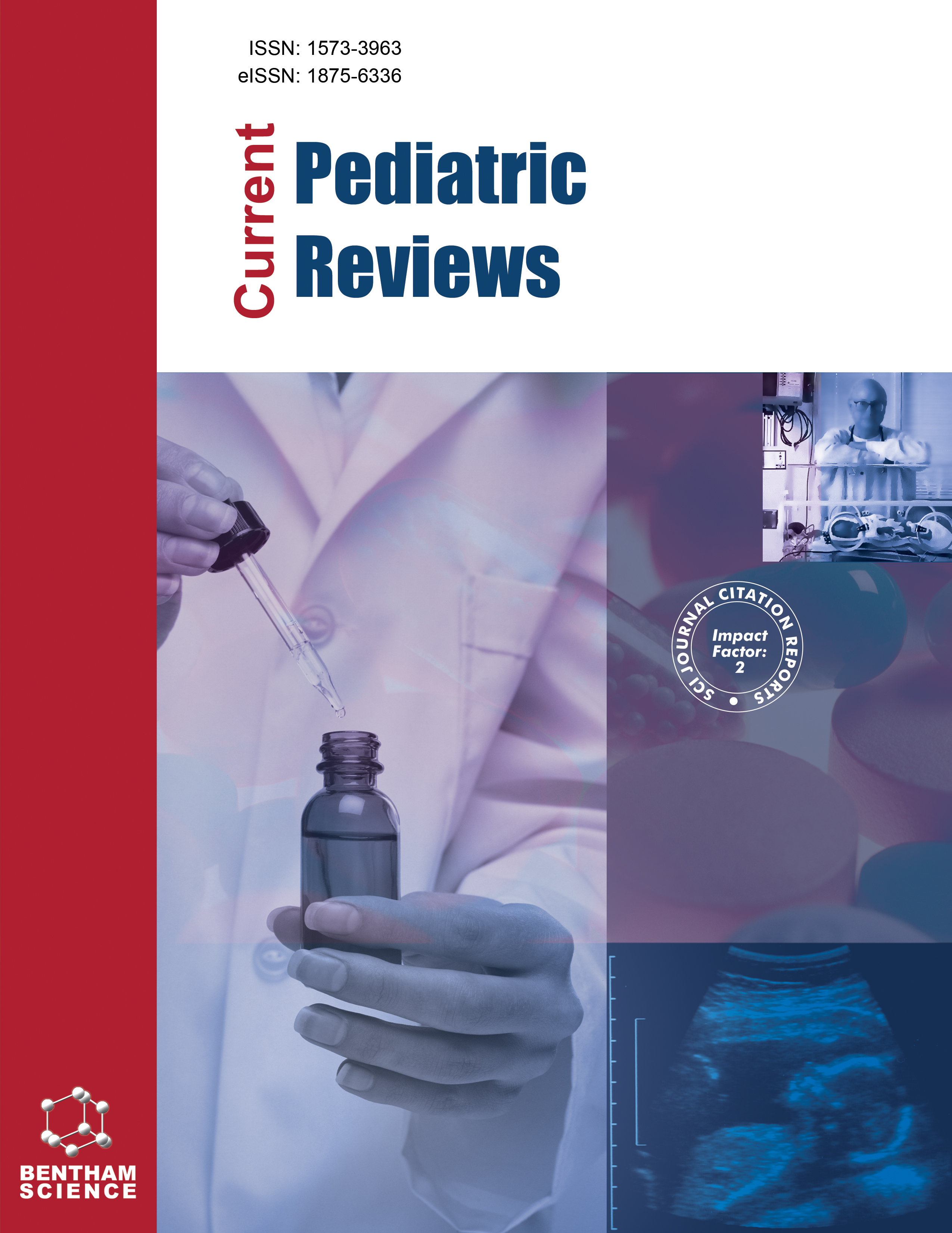- Home
- A-Z Publications
- Current Pediatric Reviews
- Previous Issues
- Volume 14, Issue 3, 2018
Current Pediatric Reviews - Volume 14, Issue 3, 2018
Volume 14, Issue 3, 2018
-
-
Advances in Food Allergy Diagnosis
More LessAuthors: Joana Gomes-Belo, Farah Hannachi, Kate Swan and Alexandra F. SantosAn accurate diagnosis of food allergy is extremely important to guide safe and yet not overly restrictive dietary management. The cornerstone of the diagnosis of food allergy is the clinical history; it allows appropriate selection of the allergens to be tested and interpretation of the results of allergy tests, namely Skin Prick Test (SPT), Specific IgE (sIgE) to allergen extracts and, more recently, specific IgE to allergen component Read More
-
-
-
Advances in the Management of Food Allergy in Children
More LessAuthors: Sadreddini Helyeh, Luyt David and Stiefel GaryFood allergy is common in children. An accurate diagnosis remains a key element in order to instigate an effective management plan. Traditional management strategies have relied on a reactive approach, with allergen avoidance, management of accidental ingestion and monitoring for resolution. Active management of food allergies relies on strategies to prevent food allergy through early introduction of allergenic food Read More
-
-
-
Demystifying Dysbiosis: Can the Gut Microbiome Promote Oral Tolerance Over IgE-mediated Food Allergy?
More LessAuthors: Tom Marrs and Kathleen SimThe growing burden of food allergy is being driven by environmental exposures and the potential role of gut micro-organisms (or ‘microbiota’) is hotly debated. Early culture-based studies outlined that imbalances between commensal gut constituents (‘dysbiosis’) early in life may raise the risk of developing allergic disease. A number of studies using animal models describe mechanisms by which specific bacterial taxa within the Read More
-
-
-
Mini Review - Asthma and Food Allergy
More LessAuthors: Ru-Xin Foong, George du Toit and Adam T. FoxBackground: It is well known that there is a common interplay between atopic conditions and that having one atopic condition can predispose to the development of others. The link between asthma and food allergy has been well researched over the years; although the exact interplay between the two atopic conditions is yet to be fully described. Research suggests that children who have both asthma and food allergy are at gre Read More
-
-
-
Atopic Dermatitis and Food Allergy: A Paediatric Approach
More LessAuthors: Natalia Cartledge and Susan ChanAtopic dermatitis and food allergy are common conditions of childhood that are closely linked. 30% of children with moderate to severe eczema suffer from food allergy and can present with different types of reactions: immediate or IgE-mediated reactions, delayed or non-IgEmediated eczematous flares, or a combination of the two. A detailed history is very important when approaching such patients. The presence of Ig Read More
-
-
-
Anaphylaxis in Children: Epidemiology, Risk Factors and Management
More LessBackground: Anaphylaxis is defined as a serious, generalized or systemic allergic reaction that is rapid in onset and may cause death. It is unpredictable and can be the result of various allergic triggers including food, insect venom and medication. The European Anaphylaxis Registry confirmed food as the major elicitor of anaphylaxis in children, specifically hen's egg, cow's milk and nuts. Objectives: It has been report Read More
-
-
-
Old and New Treatments for Pediatric Autoimmune Hepatitis
More LessAuthors: Silvia Nastasio, Marco Sciveres, Lorenza Matarazzo and Giuseppe MaggioreBackground: Autoimmune hepatitis is a rare inflammatory disease of the liver that most frequently affects children and young adults. It is a multifactorial disease of unknown etiology, characteristically progressive in nature, and if left untreated, may lead to cirrhosis and terminal liver failure. It has been known for several decades now that immunosuppressive treatment convincingly alters the outcome of most patients Read More
-
-
-
A Systematic Review of the Literature of the Three Related Disease Entities Cheilitis Granulomatosa, Orofacial Granulomatosis and Melkersson – Rosenthal Syndrome
More LessAuthors: Goetz Wehl and Markus RauchenzaunerBackground and Objective: Melkersson Rosenthal syndrome (MRS) is a rare disorder of unknown etiology and comprises the triad: orofacial edema, recurrent facial paralysis and lingua plicata. In the current literature confusing heterogeneity exists, mixing together the historically grown terms cheilitis granulomatosa or granulomatous cheilitis, Melkersson Rosenthal syndrome and the umbrella term Orofacial Granulomatosis (OF Read More
-
-
-
Febrile Neutropenia in Children with Cancer: Approach to Diagnosis and Treatment
More LessAuthors: Rejin Kebudi and Hande KizilocakBackground: Febrile neutropenia is one of the major acute side effects of intensive treatment in pediatric cancer, necessitating prompt initiation of empirical broad-spectrum antibiotics. Patients may be classified as low or high risk according some risk factors (duration of neutropenia, depth of neutropenia, type of cancer, state of disease, bone marrow involvement, type of treatment, additional health problems). Initial evaluatio Read More
-
Volumes & issues
-
Volume 21 (2025)
-
Volume 20 (2024)
-
Volume 19 (2023)
-
Volume 18 (2022)
-
Volume 17 (2021)
-
Volume 16 (2020)
-
Volume 15 (2019)
-
Volume 14 (2018)
-
Volume 13 (2017)
-
Volume 12 (2016)
-
Volume 11 (2015)
-
Volume 10 (2014)
-
Volume 9 (2013)
-
Volume 8 (2012)
-
Volume 7 (2011)
-
Volume 6 (2010)
-
Volume 5 (2009)
-
Volume 4 (2008)
-
Volume 3 (2007)
-
Volume 2 (2006)
-
Volume 1 (2005)
Most Read This Month
Article
content/journals/cpr
Journal
10
5
false
en


